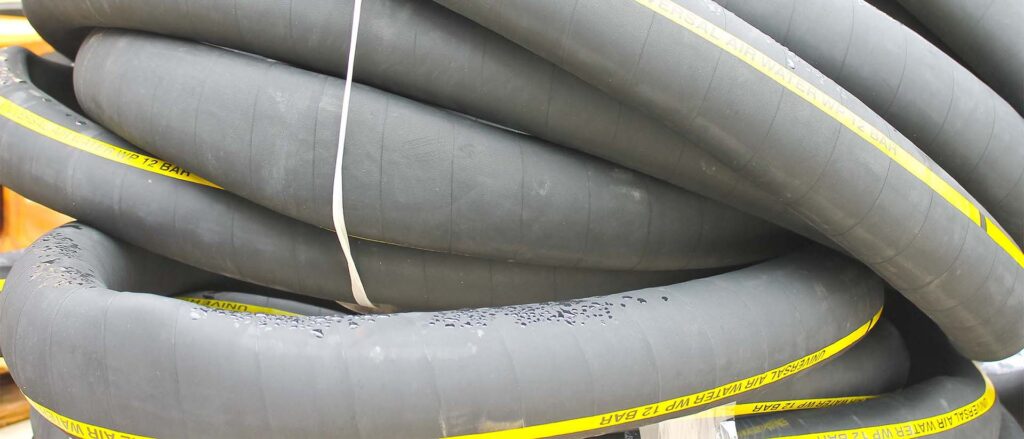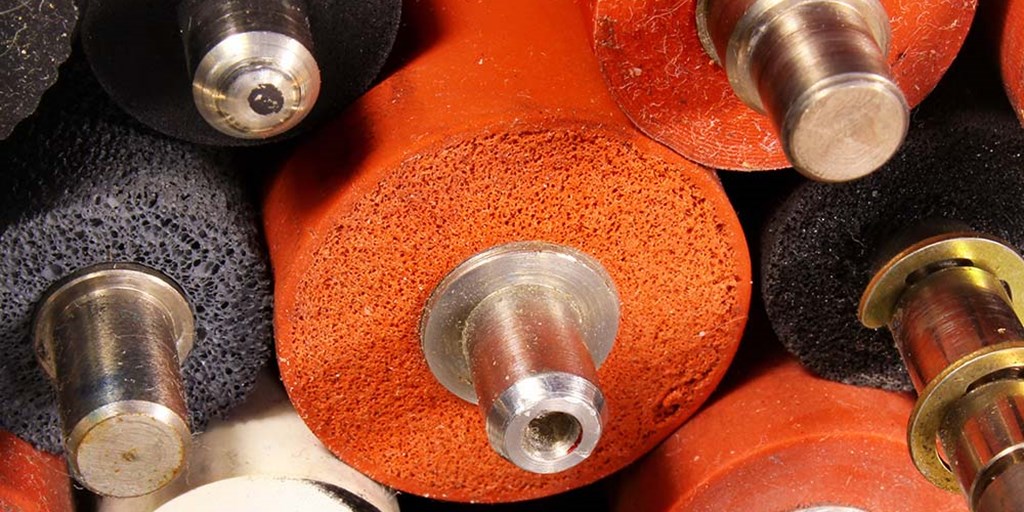Hi-Shrink Tape for Vulcanized Hoses, Rollers & Belts.
The vulcanization of rubber cylinders isn’t new technology. As far back as 1821, inventors like James Boyd and captains of industry like Charles Goodyear experimented and eventually learned how to vulcanize rubber for products like rubber-lined hoses. The latter of which is credited with discovering the process of vulcanization itself.
Vulcanizing rubber is the process of using heat, pressure, steam or a combination of the three to form cross-links between long rubber molecules in order to improve resilience, tensile strength, viscosity, hardness and weather resistance. Many types and durometers of rubber are used in the manufacturing of:
- Automotive hoses
- Chemical and fluid transport hoses
- Industrial hoses
- Print, nip and tension rollers
- Wide variety of belts for industrial and automotive applications
A Few Basic Principals for Creating Rubber Cylindars
Among the various applications and rubber types, there are some basic principles necessary for achieving the desired result of a continuously laminated, and in many cases reinforced, rubber cylinder. Though methods may vary, a common set of variables present in a large number of these applications is that of heat and pressure. Enough heat is required to drop the viscosity of the rubber in use so that it can be forced to amalgamate with itself through the use of pressure. The end result is one solid part.
In some cases, an autoclave or vulcanizer is used to achieve both heat and pressure simultaneously. In other instances, wrapping or curing tapes, are used to provide external compression on the outer surface of the cylinder. For high-performance hoses, rollers or belts these methods are often combined for maximum effect. The addition of cure wrap tape, also called hose wrap tape, can be necessary for a number of reasons. It may be required to process a room temp vulcanization (RTV cure) of a part where no heat is necessary, and an autoclave is not available. In addition, it may be required due to a number of other factors such as higher durometer rubbers, large cylinders or dense laminations for heavy duty parts like commercial rollers and industrial chemical hoses.

Unravel The Different Types of Curing Tapes
Whatever the reason, there are a few different varieties of wrapping or curing tapes. Some are flat films like polypropylene, nylon 66, polyester or pfa. Some cure wrap tapes are woven nylon or other polys. The flat films are generally one-time use, easy to apply with automated equipment or by hand. They are flexible and low cost but can become expensive when multiple layers of tape are required, or the tape becomes brittle and difficult to remove and requires additional labor.
On the other hand, woven hose wrap tapes are thick, durable and flexible enough to make gentle bends and undulations in the surface of the part. These fabrics are generally multi-use to make up for their relatively expensive costs. One of the biggest expenses of woven curing tapes is the labor involved in their removal, cleaning, re-spooling and re-use. In many cases, additional layers of release-able films and stretch films are used to aid in the compaction of the underlying part. Though both of the methods have pros and cons, we think a better solution exists.
Learn How to Vulcanize Rubber with Maximize Compaction, All While Reducing Material Waste
Dunstone customers have relied on hi-shrink curing tapes for decades because of their superior functionality on hi-performance, and high-volume rubber hoses, rollers and belts. The ability to optimize the shrink percentage and compaction force in a single layer means that not only do they generally use about half the material when compared to other wrapping and curing tapes, but they also process in less time.
The ability to optimize compaction force at a given temperature is the key here. By modifying the shrink percentage, tape overlap, and application tension, our customers can precisely target the ideal amount of compressive force placed on their part when their specific compound is flowing. Whether you need massive amounts of force or a very precise small amount of force, it is possible with Hi-Shrink Tape. The end result is high-quality lamination and vulcanization, fewer defects and rejects, and generally lower cost. You also have the ability to achieve a smooth outer surface free of defects with a tape that is just as easy to remove as it is to apply.
Have questions? Give us a call and learn how to vulcanize rubber with curing shrink tapes.
